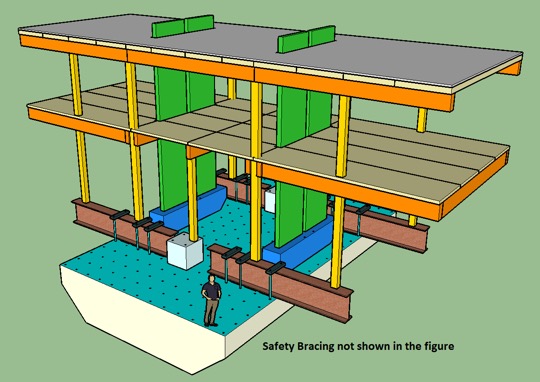With global urbanization trends, the demands for tall residential and mixed-use buildings in the range of 8~20 stories are increasing. One new structural system in this height range are tall wood buildings which have been built in select locations around the world using a relatively new heavy timber structural material known as cross laminated timber (CLT). However, the majority of existing tall CLT buildings are located in non-seismic or low-seismic regions of the world. There is consensus amongst the global wood seismic research and practitioner community that tall wood buildings have a substantial potential to become a key solution to building future seismically resilient cities. The Vision of this project is to develop and validate a seismic design methodology for tall wood buildings that incorporates high-performance structural and nonstructural systems and can quantitatively account for building resilience. This will be accomplished through a series of research tasks planned over a 4-year period. These tasks will include mechanistic modeling of tall wood buildings with several variants of post-tensioned rocking CLT wall systems, fragility modeling of structural and non-structural building components that affect resilience, full-scale biaxial testing of building sub-assembly systems, development of a resilience-based seismic design (RBSD) methodology, and finally a series of full-scale shaking table tests of a 10-story CLT building specimen to validate the proposed design. The project will deliver a new tall building type capable of transforming the urban building landscape by addressing urbanization demand while enhancing resilience and sustainability.
The Phase I tests of this project include a biaxial loading test at NHERI@ Lehigh and a two-story full scale building test at NHERI@UCSD. The two-story shake table test includes a wood building prototype with open floorplan, resilient rocking wall system, and high aspect ratio CLT floor diaphragms.
Project Website
Documentation available on project website:
http://Nheritallwood.mines.edu

Investigators
| PI | Shiling Pei | Colorado School of Mines |
| Co-PI | John W. van de Lindt | Colorado State University |
| Co-PI | Jeffrey Berman | University of Washington |
| Co-PI | James D. Dolan | Washington State University |
| Co-PI | James Ricles | Lehigh University |
| Co-PI | Richard Sause | Lehigh University |
| Co-PI | Keri Ryan | University of Nevada Reno |
| Collaborator | Andre Barbosa | Oregon State University |
| Collaborator | Hans-Erik Blomgren | Katerra |
| Collaborator | Eric McDonnell | KPFF/City of Springfield |
| Collaborator | Douglas Rammer | Forest Products Lab |
| Collaborator | Thomas Robinson | LEVER Architecture |
Contact Person
Shiling Pei
spei@mines.edu

